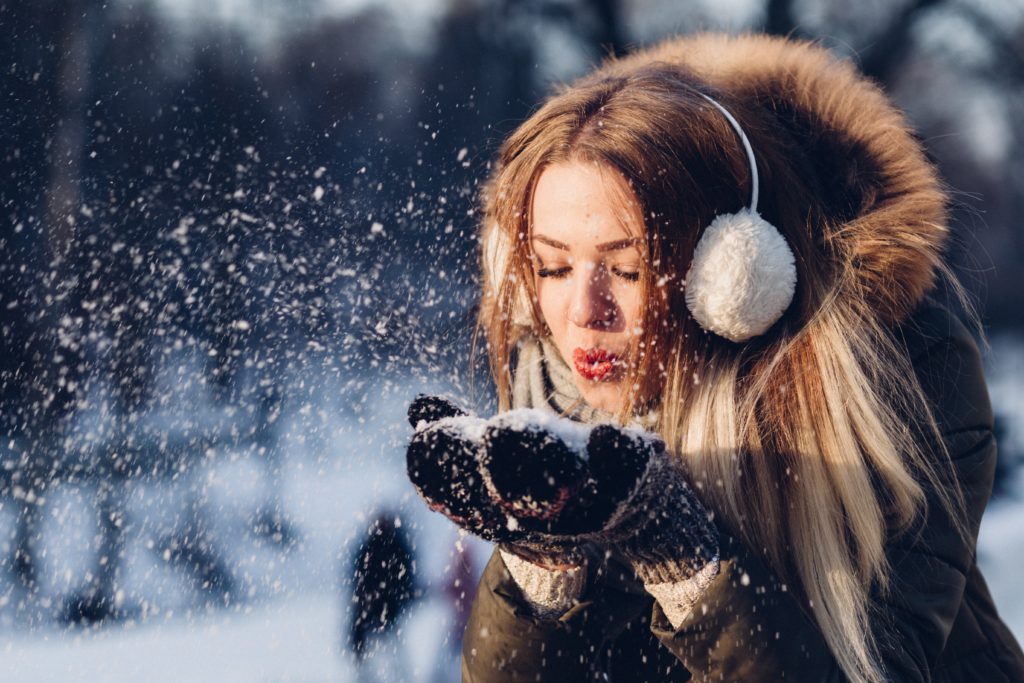All fields are required
Posted in Food Safety on January 3, 2019

We have all heard the old adage don’t eat the yellow snow… but what about the white kind? Growing up I heard all kinds of stories about people eating snow, making it into ice cream and doing all kinds of old family recipes made with the cold white stuff but seriously though is it safe? Is eating snow really a good idea?
I had family on both ends of the spectrum when it came to devouring snow. One grandmother preferred to avoid it all the way stating that there were chemicals in it that came from the sky from all of the air pollution while the other grandmother was happily outside collecting it in a mixing bowl to make snow cream. I never really knew where I stood on the whole thought process and it wasn’t until I was an adult that I completely admit to making snow cream myself. I will talk a little more about that later.
Researchers actually did a study on eating snow which is quite funny to me. It was based around the idea of foraging and eating snow, so not as much collecting it to make a sweet treat but out of more necessity.
NPR first published an article about eating snow in 2015, but updated it several times since. They involved scientists in the whole process. Here is part of the article (which happily mentioned snow cream):
Growing up in Missouri, I consumed as much snow ice cream as possible from November to March. Each time the winter sky let loose, I caught a bowl of fresh flakes. My grandmother mixed raw eggs, cream and sugar and poured it over top.
Snow is one of the first “wild” foods small humans learn to forage. And this time of year it’s both free and plentiful to many.
But is snow a magical, local and seasonal specialty, or is it an adventure in extreme eating? As with many wild foods, it can be a bit of both.
I asked Jeff S. Gaffney, a professor of chemistry at the University of Arkansas, Little Rock, if we were to package snow and put it on grocery store shelves, what would we have to put on the ingredient list?
“Primarily water,” he says, but also “various and sundry things depending on where it [comes from]” — things like sulfates, nitrates, formaldehyde or mercury.
As it falls through the sky, snow, with its intricate lattice work, forms a sort of net for catching pollutants that may be in the atmosphere. The most common is black carbon, or soot, released by coal-fired plants and wood-burning stoves.
That’s why John Pomeroy, a researcher who studies water resources and climate change at the University of Saskatchewan, suggests it’s better to wait until a few hours into the snowfall to gather your fresh catch. Snow acts like a kind of atmospheric “scrubbing brush,” he explains. The longer the snow falls, the lower the pollution levels in the air, and thus in the snow.
But even if you start to collect as soon as it begins to flurry, Gaffney reassures me that contaminants in snow are “all at levels well below toxic.”
If it’s windy, take heed, says Sarah Doherty, an atmospheric scientist at the University of Washington. She recently discovered that dirt can mix in with snow as it falls — especially in places like the northern Great Plains, where there are lots of open fields and dirt roads. That’s where Doherty took samples of freshly fallen snow in 20- to 30-mph winds.
“The snow comes out of the cloud,” she explains, “and when it gets within a few meters of the ground, it gets mixed with soil that’s blowing around.” Whether that makes the snow unsafe to eat depends entirely on what’s in the soil, says Doherty.
Just as you’d want to avoid the yellow snow, if you’ve just had a load of manure delivered in advance of spring planting and suddenly a blizzard whips through, a strong wind can quickly ruin the fresh snowball you’d planned to devour.
And “never eat snow that’s been plowed,” advises Mark Williams of the Institute of Arctic and Alpine Research at the University of Colorado. It’s likely to contain sand and chemicals such as magnesium chloride. “All this gets incorporated into the plowed snow and is bad for you.”
Researchers are generally less concerned about what’s in the snow than the fact that climate change may be causing it to rapidly disappear, especially in Western regions of the U.S. “Enjoy it now, because there’s a whole lot less of it,” says Anne Nolin, a hydroclimatologist at Oregon State University.
The recipe above mentioned adding raw eggs to make snow cream… a big no-no in this house. To make our own version of snow cream we do the following:
Whisk milk, sugar, vanilla and salt together until it is smooth. Immediately add in the snow and stir to your desired consistency. This creates a fluffy but not runny mixture. *Warning* It does melt VERY fast.
We like to top ours with fun seasonal sprinkles and we have even added chocolate or strawberry syrup to make it flavored.
No matter which side of the road you are on when it comes to eating snow, there really isn’t that much to worry about except the obvious yellow areas and those that have been plowed as the scientists found. This leaves me with a much better feeling and also knowing that while my maternal grandmother was right that there are chemicals in snow, they won’t hurt us. I can rest easy knowing that my snow cream (sans raw eggs) can be a fun project to do with our boys and will leave them with lasting snow day memories to last a lifetime.
On your next snow day give the snow a try! It just may make your day!
By: Samantha Cooper, Contributing Writer (Non-Lawyer)